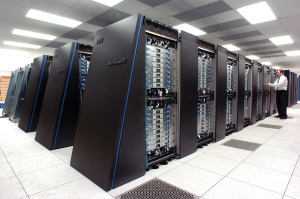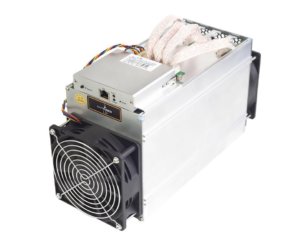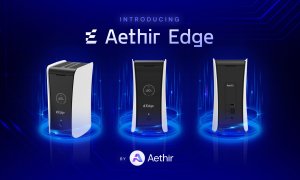Infrastructural modernity: Is blockchain viable for hardware? – FinanceFeeds research
The generic usage of the word ‘blockchain’ across many media sites which are equally as generic has recently accelerated from being a noise and has now turned into a metaphorically deafening racket. Using (or misusing) the word blockchain has become a regular activity engaged in by young interns whose understanding of SEO and digital presence […]

The generic usage of the word ‘blockchain’ across many media sites which are equally as generic has recently accelerated from being a noise and has now turned into a metaphorically deafening racket.
Using (or misusing) the word blockchain has become a regular activity engaged in by young interns whose understanding of SEO and digital presence on the internet is greater than their technical understanding of electronic financial infrastructure used by large institutions.
With such overuse along with its continual appearance in many often inappropriate contexts, the word ‘blockchain’ along with a similarly exhausted buzzword which prefixes so many new products ‘crypto’ run the risk of being nominated to appear in the 44th Banished Words List, famously compiled every year by literary academics at Lake Superior State University.
FinanceFeeds has detailed the actual correct definition of a blockchain database on numerous occasions, and that whilst the proponents of crypto-mania have somewhat hijacked it in order to fuel their own cause by attempting to align themselves with institutional research and development projects which, whilst designing distributed ledger systems and extending blockchain database technology into corporate banking and operational environments, have as much to do with Bitcoin as the Queen’s crown has to do with the Hoover Dam.
A matter that has been exhausted in various discussions is whether blockchain databases can be used to automate certain procedures within financial institutions, an application of the technology that is completely separate to digital currency, and another is that blockchain research startups are somehow the new veil of disguise for cryptocurrency ventures with no fiscal means or commercial credibility.
What, however, if the viability of blockchain technology is viewed from a hardware and infrastructure perspective?
Whilst the Chinese government has taken the important steps toward banning many cryptocurrency related activities in mainland China and blocking the IP addresses of those soliciting from outside, the world’s futuristic and entrepreneurial superpower is very much aligned with the technological benefit of using distributed solutions, as long as they can be monitored by, and are visible to, the Chinese government.
As expected, most of the emphasis within China is on hardware R&D.

Established in 2013, the Beijing-based Bitmain makes, operates and sells “bitcoin miners”. It just raised $50M from top-tier venture capital firms Sequoia Capital and IDG Capital Partners, at a valuation “in the billions” according to Bloomberg. It is now considering an IPO.
Interestingly, many of its 25,000 miners are located in Inner Mongolia, where cheap electricity makes the operation very profitable. It basically arbitrages CPU, electronics and power costs. This is congruent to FinanceFeeds research that demonstrates today’s Bitcoin mining success to be largely concentrated in (ironically) socialist countries with government provided electricity or electricity so heavily subsidized that it is almost free.
Interestingly, although a Chinese company, many of Bitmain’s 25,000 miners are located in Inner Mongolia, where cheap electricity makes the operation very profitable. It basically arbitrages CPU, electronics and power costs.
This resilient approach to hardware development by the Chinese authorities makes for an interesting dichotomy when looking at its disdain for ICOs and ‘pump and dump’ schemes.
Interestingly, Asia plays a big role in crypto and ICOs. This is due to the large number of miners and their accumulated token wealth, as well as the numerous platforms for trading currencies. Some act as backers, promoters or “market makers,” comparable to what underwriters would do with IPOs.
Recently, George Popescu, Lampix’s CEO, confirmed to Forbes that Asia played a key role in his ICO which aims to be the world’s first hardware related cryptocurrency venture.
“The PIX tokens sold during our ICO will be used as a form of payment to picture data miners, voters, or to purchase a Lampix and cloud computing. We want to put a Lampix in every room, office, shop and factory, and make the PIX database the ‘Amazon of data for A.I.’,” Mr. Popescu explained.
One of the moot points with regard to operating hardware that either mines cryptocurrency or is structured to operate a blockchain database is the cost of production.
Last year, some Bitcoin proponents, including Jimmy Song who publicly advertises his fingerprint as C1D7 97BE 7D10 5291 228C D70C FAA6 17E3 2679 E455 stated that he encountered difficulty in assigning how much it costs Bitmain to run their mining pool.
“I didn’t know their profit margins for their miners and simply used their current retail pricing for their S9 miners ($1200). Of course, the retail price is certainly not the production cost for Bitmain, but I had no idea what that was, so I used the easiest number I had available” said Mr Song.
“Generally speaking, chip fabrication is the most expensive part of the miner build. Thankfully, chip fabrication costs are fairly standard for a given process and we can figure out how much they cost with a little digging and math” stated Mr Song publicly.
“We know that Bitmain uses TSMC’s 16nm process to build their BM1387 chips. A little googling will tell you that TSMC’s production cost per wafer of the 16nm (Newton Meters) process is around $4000. Their gross margins are around 45%, so we can assume that the cost per wafer to Bitmain is around $8000”.
Mr Song elaborated “If you know the die-size of the chip, you can figure out exactly how many chips you can print per wafer. The Bitmain BM1387 chip is somewhere below 20 mm² in die size, and though it isn’t published, looks to be 3mm x 4mm by measuring the inside.”
“We can plug in these numbers to a die-per-wafer calculator and get 5158 chips per wafer (we’re using the 300mm/12″ wafers as is industry standard). Each S9 miner uses 189 such chips, so each wafer can make enough chips for a little over 27 S9’s. Each wafer costs around $8000, so the chips for each S9 costs roughly $300” he said.
“The rest of the parts are fairly standard and my semiconductor friends tell me it’s probably not more than $200 in bulk (power supply, heat sinks, controller, PCB, etc), we can estimate the cost of production of the S9 to be roughly $500.”
In January this year, Alex Evans, an Analyst at Lowe’s Ventures examined the historic factors that modern hardware attempts to make more efficient.
Mr Lowe explained that valuation methodologies have historically lagged behind the development of the assets they represent. While the Dutch East India Company became the frst entity to sell stocks on a public exchange in the early 1600s, it was not until the 20th century that a comprehensive framework for deriving the fundamental value of equity securities was developed.
What Graham and Dodd benefited from in 1934 that their predecessors perhaps lacked was a broadly-accepted philosophy of disclosure (eventually codified in the Securities Act of 1933) and, more importantly, a reliable accounting system with unified measurement standards and practices— a common language for discussing value.
Mr Lowe makes the following observations:
1.) Demand for money and demand for commodities are conceptually distinct and should be accordingly decoupled in monetary valuation models. In the INET model, demand for INET and demand for
bandwidth are practically one and the same. We need to model demand for money separately from demand for commodities.
2.) Cryptoassets are embedded in a broader asset universe. One way of looking at the INET model is as a single-good, single-asset economy. Utility tokens should instead be seen to compete with other assets for holders. As a corollary, expected returns of other assets should affect demand for the asset being modeled.
3.) Related to (2), transactional demand and speculative demand are conceptually distinct and have different drivers. In the INET model, speculative demand is captured in a supply reduction (HODLed coins are removed from circulation). If the asset is not a store of value, as per the velocity thesis, it may be more realistic to direct speculative demand to another asset and capture this store-of-value demand within the money demand curve.
4.) Blockchain economies are (currently) highly frictional. These frictions could be in the form of transaction costs/fees, cognitive costs, illiquidity, inconvenience, and others. We need to model these frictions, project their behavior over time, and trace their effects on demand for different assets.
5.) Velocity (a) varies over time and (b) should be measurable in a way that is (at least somewhat) distinct from the other variables. I.e. In the INET model, velocity and PQ have no correlation, while price and PQ have a perfect 1.0 correlation coefficient.
Stamford Research Institute graduate Dmitry Kalichkin who is now operatin Cryptolab Capital, thinks that network value needs to be readdressed.
He states that NVT, which stands for Network Value Transactions, are a case in point.
“In a traditional PE ratio, the earnings metric in the denominator is used as a proxy for the underlying utility of the company created for the shareholders” said Mr Kalichkin.
“While cryptoassets don’t have earnings, one can argue that the total value of transactions flowing through the network is a proxy for how much utility users derive from the chain. It is worth highlighting that Daily Transaction Volume in NVT takes into account only on-chain transactions. All the trading activity that happens on exchanges and is, for the most part, speculative is not included in this volume” he said.
Hong Kong based Benjamin Joffe, who works in Shenzhen as a Partner at HAX, a large early stage investor in hardware startups with more than 200 investments, has a particular viewpoint.
HAX is part of SOSV, a program-based global seed fund with $300M under management hence Mr Joffe’s ability to see the hardware usage aspect clearly is credible indeed.
Mr Joffe cites George Popescu’s Lampix as an example.
“What is Lampix? It makes special projectors, and is building an image database. By projecting images of objects onto a table or wall, it allows users to manipulate them in a natural way. But for this, it needs a lot of properly tagged images” he said.
On this, Mr Popescu explained “To enable Lampix to reach its full potential, we need to build a billion-picture-and-description database.”
There is, however, another more fundamental weakness of NVT. It only takes into account total value of on-chain transactions, but it doesn’t factor in the number of transactions or the number of addresses (wallets) participating in these transactions. L
Mr Kalichkin calls this metric Daily Active Addresses (DAA). For internet companies, especially marketplaces, social networks, and other businesses with strong network e?ects, the analogous Daily
Active Users (DAU) indicator is one of the most important performance and valuation metrics.
This and other metrics that now make up the language of valuing internet companies didn’t exist in the 1990s. It has been developed by technology investors over the last 20+ years and in this study can be considered to be a similar valuation framework for cryptoassets is yet to be developed and is only starting to form.









